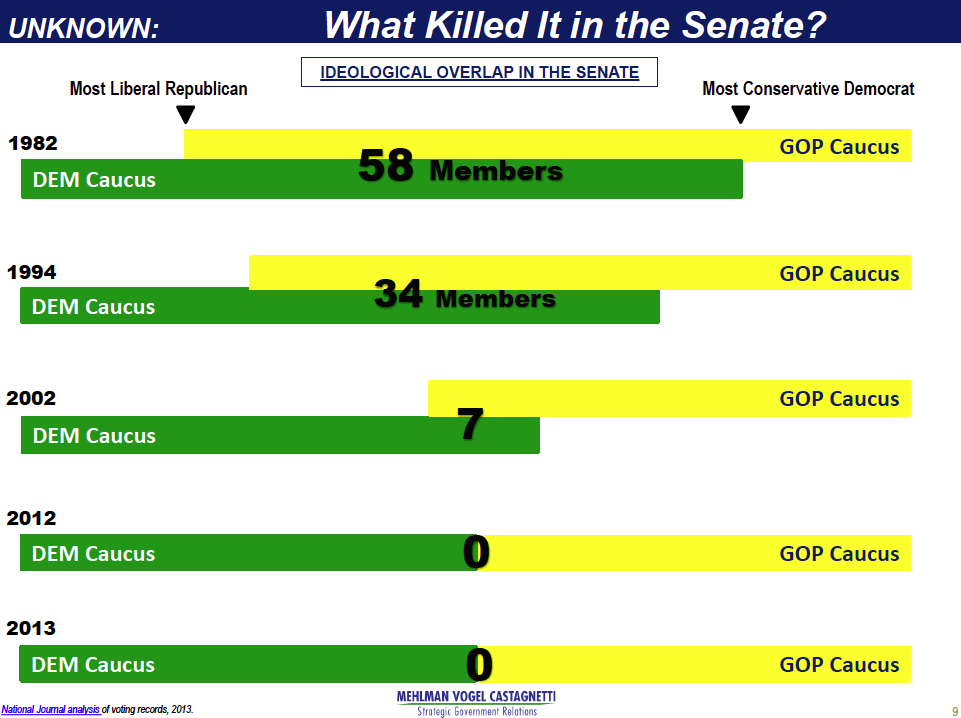“It’s not news that the ideological middle in Congress is disappearing,” writes Chris Cillizza in today’s Washington Post. “But rarely have I ever seen it so starkly documented as in these two slides courtesy of Mehlman Vogel Castagnetti, a lobbying firm here in DC.”
Cillizza explains:
Using National Journal’s annual vote ratings, the slides compare the most liberal Republican and the most conservative Democrat and count the number of Members in between those two poles.
Here’s how that looks in the House from 1982 -2013:
In the last three decades, the number of members in the middle in the House dropped from 344 (79 percent of the House) in 1982 to four (.9 percent of the House) in 2013. As the slide suggests, redistricting — the decennial re-drawing of the nation’s Congressional lines — plays a major role in that decline. The last two nationwide re-draws have largely been incumbent protection efforts, making Republican districts more Republican and Democratic districts more Democratic. Self-sorting — the growing tendency of people to live around like-minded people — is also a major factor in the disappearance of the ideological middle in the House.
More intriguing — and harder to explain — is how the middle has dropped out of the Senate, which is not subject to redistricting and, because Senators represent entire states, self-sorting should be less powerful. And yet, here’s the Mehlman Vogel Castagnetti slide on the partisanship in the world’s greatest deliberative body:
Read the rest of Cillizza’s article at The Washington Post.
In the post, Cillizza doesn’t mention what may be the most important political trend of our time: the asymmetric nature of our contemporary polarization. Yale political scientist Jacob Hacker used a system called DW-NOMINATE, which measures how far from the center lawmakers’ votes fell, for his 2006 book, Off Center. In it, he noted that since 1975, Senate Republicans have moved twice as far to the right as their Democratic counterparts moved to the left. In the House of Representatives that trend has been even more pronounced. Hacker found that Republicans in the lower chamber had shifted six times further to the right than their Democratic counterparts went to the left over that same period.



